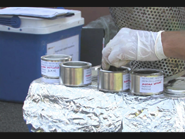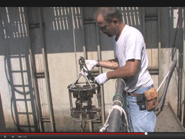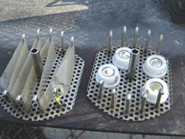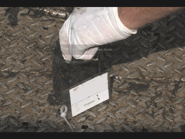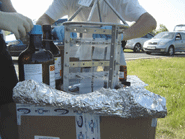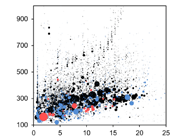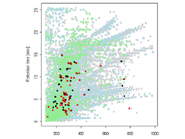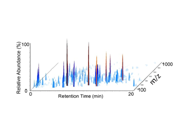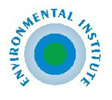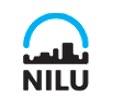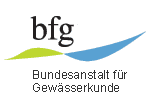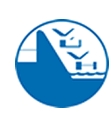You are here
Workshop on Mixtures and Metabolites of Chemicals of Emerging Concern
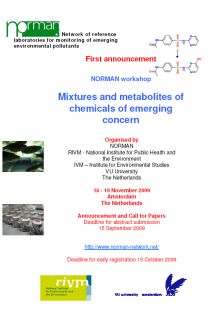 Workshop on Mixtures and Metabolites of Chemicals of Emerging Concern
Workshop on Mixtures and Metabolites of Chemicals of Emerging Concern
18-19 November 2009 - Amsterdam, The Netherlands
Releases of chemicals in the environment often cause the formation of transformation products which may be more toxic than the parent compound. This possibility of increased toxicity over time has been afforded insufficient attention in chemical regulation. There is, moreover, limited awareness of the analytical implications of this phenomenon. With this in mind, a workshop on mixtures and metabolites of chemicals was organised by RIVM (National Institute for Public Health and the Environment) and IVM (Institute for Environmental Studies – VU University [The Netherlands]) and took place in Amsterdam on 18–19 November 2009.
About 70 participants attended the workshop, with 16 presentations (available as pdf files - see below)
and 11 posters. The conclusions of this two-day workshop are presented in a specific report. However, it was already clear from the discussion that the co-occurrence of chemicals in the environment plays an important role in the overall environmental impact of chemicals.
The ecotoxicological assessment of mixtures is complex and there are still many knowledge gaps. But checking compliance with environmental quality standards alone is obviously not sufficient: a number of modelling tools for prediction of mixtures effects exist already and they need to be integrated in future routine risk assessment protocols.
The second day was focused on the tools for identification and analysis of the metabolites and transformation products of chemicals of emerging concern. Here again, the main tools available (in silico methods, analytical techniques, bioreactors, field studies) to study the chemicals’ transformation products were presented.
But knowledge gaps still exist in the analysis of transformation products, fate and transport, and toxicity of these compounds. Moreover, most of the current studies addressed two main classes of compounds: pesticides and pharmaceuticals. Is this the tip of the iceberg? How many transformation products should also be covered?
WORKSHOP PROGRAM AND PRESENTATIONS
Wednesday November 18, 2009
Introduction
Session 1: Mixtures (bio)monitoring and modelling
-
Stephan Kools
Methods development to detect antibiotic activity in water samples (1421 kB) -
Merijn Schriks
Toxicological relevance of emerging contaminants for drinking water quality (1100 kB) -
Marja Lamoree
Masking effect of anti-androgens on androgenic activity in European sediments (928 kB) -
Jan Baas
Modelling and fate of mixtures
Session 2: Risk assessment of mixtures: approaches and practical experiences
-
Ludek Blaha
Assessment of endocrine disruptive potential of complex pollutant mixtures in the river ecosystem affected by a major city - bioassays and chemical analyses (818 kB) -
Despo Kassinos
Risk assessment of mixtures of nine pharmaceuticals using multispecies biotests (1555 kB) -
Timo HAMERS
Toxicity profiling: an effect-based integrative tool for sediment quality assessment (1109 kB)
Tuesday November 19, 2009
Session 3: Modelling, fate and risk assessment of metabolites and transformation products
-
Kathrin Fenner
Predicting biotransformation products: development and validation of a computer-based tool (1331 kB) -
Rosalie van Zelm
Modelling fate and effects of chemicals including their transformation products (262 kB) -
Serge Chiron
Nitration processes of acetaminophen in nitrifying activated sludge (349 kB) -
Chris Sinclair
The Risk to the UK Population of Pesticide Metabolites in Drinking Water (542 kB)
Session 4: Chemical monitoring of metabolites and transformation products
-
Juliane Hollender
Identification and quantification of transformation products in the aquatic environment by high resolution mass spectrometry (1065 kB) -
Geal Gervais
Highlighting and identification technique of chlorination by-products of Ethinylestradiol in Drinking Water Treatment by untargeted profiling method by LC-HR(MS)n (1033 kB) -
Robert Loos
Analysis of polar organic chemicals in European rivers and ground waters by SPE-LC-MS-MS (1937 kB) -
Barry Pieters
Emission of pharmaceuticals from care units into wastewater: from identification of sources to monitoring (1238 kB) -
Annemarie van Wezel
Relationship of occurrence of pharmaceuticals in surface water with consumption
